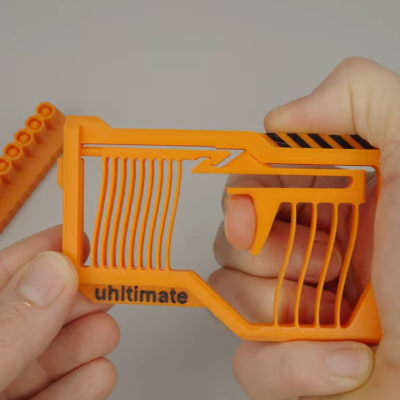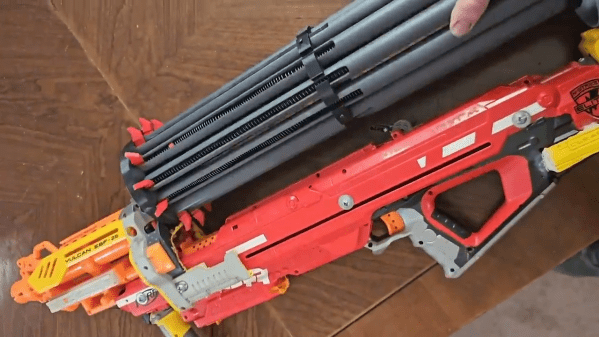You could use a little pocket-sized Pez dispenser if you’re a humble, reserved person. Or, you could follow the example of [Backhaul Studios], and build a dangerously powerful blaster that shoots Pez fast enough to shatter them into pieces. Just don’t aim it at your own mouth.
As the video explains, Pez is really the perfect candy for this application. It’s compact, hard, and already designed to be dispensed via a magazine. It’s thus not a big stretch to set it up to be fired out of a pistol-like blaster. The build is of the flywheel type, where a pair of counter-rotating wheels fling the candy out at great speed. The wheels themselves are spun up to high speed with a pair of small brushless motors, running off hobby speed controllers and lithium-ion batteries. A simple trigger mechanism dispenses the rectangular candies into the wheel mechanism, sending them flying out of the blaster at will. It’s all 3D-printed, designed specifically for the purpose of high-speed candy delivery.
The video goes into great detail on the design, from the development of the TPU treads on the flywheels and other details that helped improve the effectiveness of the design. The final build shoots Pez fast enough that they practically detonate upon hitting a surface.
We’ve featured some innovative work in this space from [Backhaul Studios] before—the condiment cannon was really quite something. Video after the break.
Continue reading “Pez Blaster Shoots Candy Dangerously Fast”



















